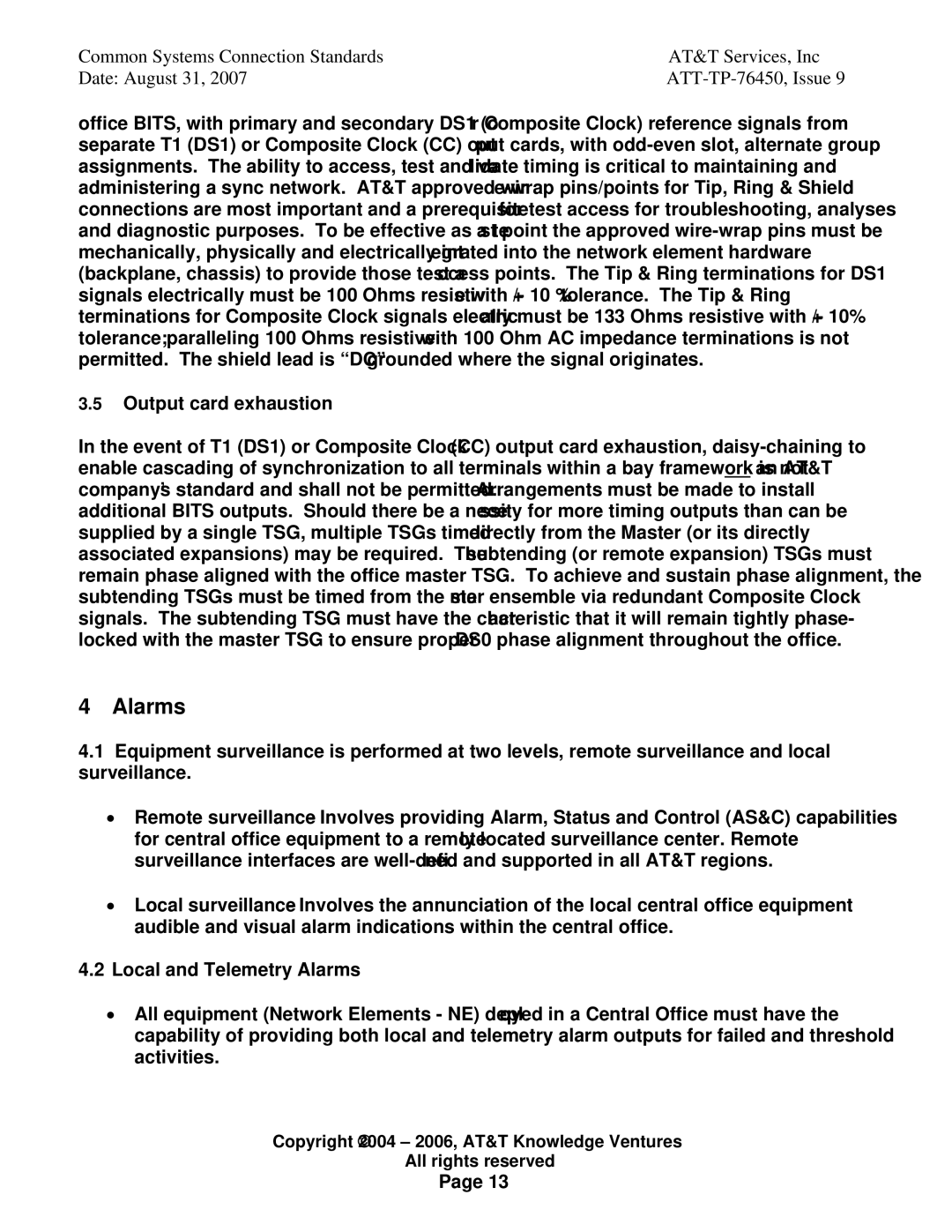Common Systems Connection Standards | AT&T Services, Inc |
Date: August 31, 2007 | ATT-TP-76450, Issue 9 |
office BITS, with primary and secondary DS1 (or Composite Clock) reference signals from separate T1 (DS1) or Composite Clock (CC) output cards, with odd-even slot, alternate group assignments. The ability to access, test and validate timing is critical to maintaining and administering a sync network. AT&T approved wire-wrap pins/points for Tip, Ring & Shield connections are most important and a prerequisite for test access for troubleshooting, analyses and diagnostic purposes. To be effective as a test point the approved wire-wrap pins must be mechanically, physically and electrically integrated into the network element hardware (backplane, chassis) to provide those test access points. The Tip & Ring terminations for DS1 signals electrically must be 100 Ohms resistive with +/- 10 % tolerance. The Tip & Ring terminations for Composite Clock signals electrically must be 133 Ohms resistive with +/- 10% tolerance; paralleling 100 Ohms resistive with 100 Ohm AC impedance terminations is not permitted. The shield lead is “DC” grounded where the signal originates.
3.5Output card exhaustion
In the event of T1 (DS1) or Composite Clock (CC) output card exhaustion, daisy-chaining to enable cascading of synchronization to all terminals within a bay framework is not an AT&T company’s standard and shall not be permitted. Arrangements must be made to install additional BITS outputs. Should there be a necessity for more timing outputs than can be supplied by a single TSG, multiple TSGs timed directly from the Master (or its directly associated expansions) may be required. The subtending (or remote expansion) TSGs must remain phase aligned with the office master TSG. To achieve and sustain phase alignment, the subtending TSGs must be timed from the master ensemble via redundant Composite Clock signals. The subtending TSG must have the characteristic that it will remain tightly phase- locked with the master TSG to ensure proper DS0 phase alignment throughout the office.
4 Alarms
4.1Equipment surveillance is performed at two levels, remote surveillance and local surveillance.
•Remote surveillance - Involves providing Alarm, Status and Control (AS&C) capabilities for central office equipment to a remotely located surveillance center. Remote surveillance interfaces are well-defined and supported in all AT&T regions.
•Local surveillance - Involves the annunciation of the local central office equipment audible and visual alarm indications within the central office.
4.2Local and Telemetry Alarms
•All equipment (Network Elements - NE) deployed in a Central Office must have the capability of providing both local and telemetry alarm outputs for failed and threshold activities.
Copyright ©2004 – 2006, AT&T Knowledge Ventures
All rights reserved
Page 13
